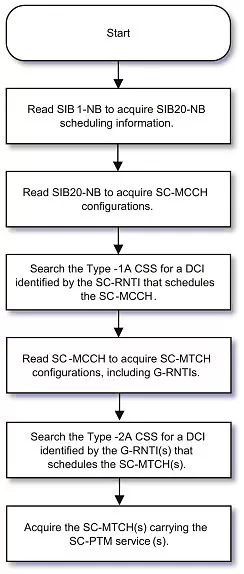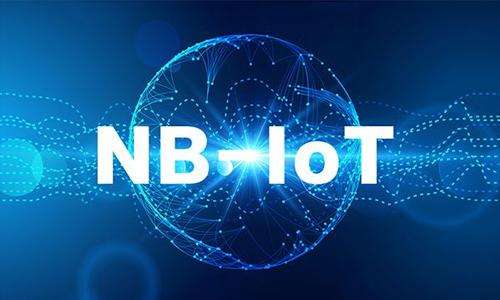Abstract
Revolutionizing the Internet of Things (IoT) landscape, this paper explores crucial enhancements in Narrowband IoT (NB-IoT), focusing on Radio Resource Control (RRC) layer upgrades, Small Data Transmission (SDT) solutions, multicast support, and 16-QAM modulation. These advancements have significantly improved latency, throughput, and resource utilization, paving the way for a more efficient and versatile IoT infrastructure.
NB-IoT and the Role of the RRC Layer
Narrowband Internet of Things (NB-IoT) is a radio technology standard developed to enable a myriad of cellular devices and services. It supports low-throughput devices that require infrequent data transmission, making it optimal for Internet of Things (IoT) applications.
The RRC layer is responsible for controlling the radio resources. This layer handles everything from connection establishment to the security of the radio interface. In NB-IoT, the RRC layer plays an especially crucial role due to its impact on device battery life and network efficiency.
Release 16 brought pivotal enhancements to the NB-IoT RRC layer, significantly improving latency and throughput, elements crucial for IoT devices’ efficiency. These enhancements and their implications are the main focus of this article.
The Pre-Release 16 NB-IoT Scenario: Throughput and Latency
Before the enhancements brought by 3GPP Release 15 and later on the Release 16, NB-IoT’s operation faced some constraints, notably in throughput and latency.
For example, the binary state model of the RRC layer, allowing only two states – RRC_Connected and RRC_Idle.
The transition between these states was not optimized for devices requiring frequent, small data transmission, a common characteristic of IoT devices. It involved a complex procedure, causing significant latency and affecting throughput.
Furthermore, the RRC Idle state meant devices had to reestablish their connection each time they needed to communicate, further exacerbating latency issues. Overall, the protocol lacked efficiency for IoT-specific requirements, calling for an evolution to better cater to the IoT landscape.
Small data transmission with RRC Inactive State in NB-IoT
Small Data Transmission (SDT) in RRC Inactive state is one of the new features being introduced in 3GPP Release 17 for 5G . To support power-efficient connection establishment enables UEs in RRC Inactive state to transmit infrequent and small data without requiring an RRC state transition.
Not having to resume an RRC connection reduces the control plane signaling overhead, which is especially relevant for low-power devices that support traffic characterized by infrequent and small data transmissions.
Performance Evaluation
Based on [1], the Table 1 shows the relative performance gains over the baseline case for each key performance indicator.
| SDT Solution | Total Packet Delay Reduction | UE Energy Saving | Uu Transmissions Reduction | Physical Resource Saving |
| 4-step RACH based SDT | 53% | Up to 73% | Reduced | 31% |
| 2-step RACH based SDT | 82% | Up to 73% | Reduced | 38% |
| CG based SDT | 85% | Up to 73% | Up to 78% | 75% |
Table 1: relative performance gains over the baseline case
For baseline performance with different payload sizes, we have:
| Payload Size (Bytes) | Total Packet Delay (ms) | UE Energy Consumption (Relative Energy) | Uu Transmissions | Physical Resource Usage (no. of PRBs) |
| 25 | 27.9 | 30 | 9 | 16 |
| 50 | 37.9 | 30 | 9 | 17 |
| 100 | 47.9 | 30 | 9 | 19 |
Table 2: baseline performance with different payload sizes
The relative performance gains of these SDT solutions over the baseline case in terms of key performance indicators: total packet delay reduction, UE (User Equipment) energy saving, Uu transmissions reduction, and physical resource saving. We can observe that all three SDT solutions deliver significant performance improvements compared to the baseline, with the CG-based SDT showing the most substantial gains.
The Table 2 provides baseline performance data for different payload sizes and serve as reference points to understand the performance of conventional data transmission after RRC resume in the context of NB-IoT.
Small Data Transmission, especially the CG-based SDT, have demonstrated considerable potential in enhancing the efficiency of NB-IoT networks, contributing to decreased packet delay, reduced energy consumption, and better utilization of physical resources. This improved efficiency and effectiveness of data transmission in NB-IoT paves the way for more advanced functionalities. One such functionality that could greatly benefit from these improvements is multicast support, an important feature that enables simultaneous data transmission to multiple recipients, significantly expanding the range of applications and use cases that NB-IoT can support.
Multicast Support in NB-IoT
The focus of New Radio (NR) in the 3GPP Releases 15 and 16 has largely been unicast data transmission, which involves direct data communication between a single user equipment (UE) and a gNB (Next-generation NodeB). This one-to-one communication framework, however, limits the efficient dissemination of information to multiple users simultaneously, a shortcoming addressed by the implementation of broadcast and multicast transmission modes.
The utility of broadcast and multicast modes is crucial in support of use cases such as efficient multimedia distribution, advanced driving, and public safety applications.
To achieve this, several mechanisms are being considered, including link adaptation, hybrid automatic repeat request (HARQ), multiple-input multiple-output (MIMO), and feedback mechanisms. For instance, link adaptation could contribute to more effective utilization of wireless resources, while MIMO and HARQ mechanisms could potentially enhance reliability and throughput. The incorporation of these features is expected to significantly boost the performance of broadcast and multicast transmissions in NR.
How Multicast Support Works in NB-IoT
Multicast transmissions in Narrowband Internet of Things (NB-IoT) operate within the framework of the Single Cell Point to Multipoint (SC-PTM) service. This service facilitates efficient group message delivery, particularly beneficial for implementing software or firmware updates across multiple devices concurrently. SC-PTM derives from the architecture of the Multimedia Broadcast Multicast Service (eMBMS) and is responsible for providing the air interface that supports single-cell broadcast and multicast transmissions.
SC-PTM in NB-IoT shares a similar design with LTE-M SC-PTM and is characterized by the definition of two logical channels: the Single Cell Multicast Control Channel (SC-MCCH) and the Single Cell Multicast Traffic Channel (SC-MTCH). Both these logical channels are mapped onto the Narrowband Physical Downlink Shared Channel (NPDSCH). Scheduling of the NPDSCH is coordinated by the Narrowband Physical Downlink Control Channel (NPDCCH), which is transmitted within two new common search spaces associated with the SC-MCCH and SC-MTCH.
The Type-1A Common Search Space (CSS) houses NPDCCH candidates, where the Cyclic Redundancy Check (CRC) is scrambled by the Single Cell Radio Network Temporary Identifier (SC-RNTI) that schedules the NPDSCH carrying the SC-MCCH. Given the SC-MCCH’s similarity to paging – that is, its broadcast nature targeting a group of devices within a cell – the design of Type-1A CSS mirrors that of Type-1 CSS. Here, NPDCCH candidates can only initiate at the start of the search space.
On the other hand, Type-2A CSS holds NPDCCH candidates, with the CRC scrambled by the Group RNTI (G-RNTI), scheduling the NPDSCH that carries the SC-MTCH. Maintaining scheduling flexibility for SC-MTCH is crucial, hence Type-2A CSS adopts the design principles of Type-2 CSS. This entails defining several starting points for NPDCCH candidates.
Upon receiving an SC-PTM service configuration from the higher layer, a device identifies the scheduling information of System Information Block 20 (SIB20-NB) after reading System Information Block 1 (SIB1-NB). The SIB20-NB contains the necessary information to acquire the SC-MCCH configurations associated with SC-PTM transmission in the cell. Through the SC-MCCH, a device can further discover the configuration information of the SC-MTCH that carries the multicast service of interest. Each cell can configure one SC-MCCH, and this may support up to 64 simultaneous multicast and broadcast services transmitted over the SC-MTCH. Both anchor and non-anchor carriers can be utilized to carry SC-MCCH and SC-MTCH.

16-QAM modulation for NB-IoT
The incorporation of 16-QAM modulation paved the way for enhanced data rates in NB-IoT, catering to applications necessitating larger data transmission, such as firmware updates for IoT devices. It’s important to note that the implementation of 16-QAM in NB-IoT is contingent on a high Signal-to-Noise Ratio (SNR), implying its use when the device exhibits an excellent network connection. Conversely, in challenging radio conditions, a simpler modulation scheme is selected to guarantee reliable communication.
- This modulation scheme allows the transmission of 4 bits per symbol, doubling the data rate over the previously standard QPSK (Quadrature Phase Shift Keying) modulation, which only transmits 2 bits per symbol.
- The use of 16-QAM in NB-IoT is contingent on high Signal-to-Noise Ratio (SNR) conditions, which means it is generally used when the device has an excellent network connection.
- In challenging radio conditions, simpler modulation schemes like BPSK or QPSK are used instead to ensure reliable communication.
- The incorporation of 16-QAM modulation has increased the potential for higher data rates in NB-IoT systems, thus enabling support for more data-intensive applications.
Conclusion
The evolving landscape of NB-IoT technology has witnessed remarkable advancements and improvements, especially in the area of RRC layer operations. The examination of these enhancements underscores the importance of a more efficient and tailored approach to address the unique demands of IoT applications. The incorporation of RRC Inactive state and Small Data Transmission solutions has proven to be highly beneficial for the NB-IoT ecosystem, offering significant improvements in performance metrics such as packet delay reduction, energy conservation, and resource utilization.
Simultaneously, the development and integration of new functionalities such as multicast support further amplifies the potential and versatility of NB-IoT systems. This feature, leveraging efficient group message delivery and advanced broadcast/multicast mechanisms, ushers in a plethora of novel applications spanning multimedia distribution, advanced driving, and public safety.
The addition of 16-QAM modulation has opened the door for enhanced data rates, catering to the needs of applications requiring larger data transmission. Though its usage is contingent upon high Signal-to-Noise Ratio conditions, this modulation scheme considerably expands the bandwidth efficiency and data-intensive capability of NB-IoT systems.
These advancements reflect a responsive evolution of NB-IoT, showing promise in accommodating the rapidly growing demands of IoT applications and enabling a more connected and intelligent world.
References
- Khlass and D. Laselva, “Efficient Handling of Small Data Transmission for RRC Inactive UEs in 5G Networks,” 2021 IEEE 93rd Vehicular Technology Conference (VTC2021-Spring), Helsinki, Finland, 2021, pp. 1-7, doi: 10.1109/VTC2021-Spring51267.2021.9448945.
- IEEE Wireless Communications, pp. 124-130, Ultra-Reliable and Low-Latency Communications in 5G Downlink: Physical Layer Aspects, June 2018, Ji, H; Park, S; Yeo, J; Kim, Y; Lee, J; Shim, B
- 3GPP RP-190489, NR mobility enhancements
- 3GPP RP-191600, LTE-NR & NR-NR Dual Connectivity and NR Carrier Aggregation enhancements
- 3GPP TR 38.889, Study on NR-based access to unlicensed spectrum
- 3GPP TR 38.825, Study on NR industrial Internet of Things (IoT)

